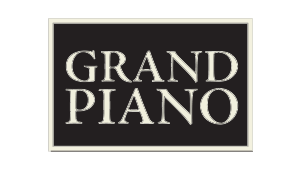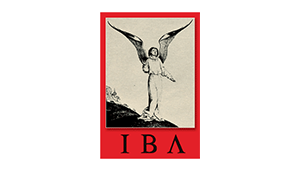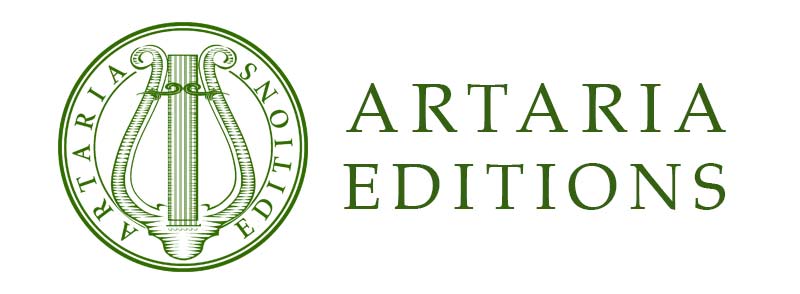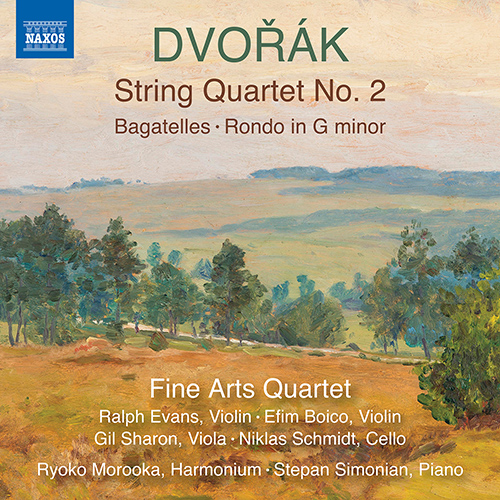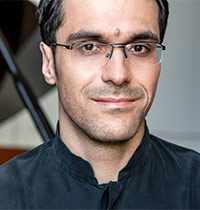This album brings Naxos’ series of Dvořák’s fourteen string quartets to its conclusion. Performed by the renowned Fine Arts Quartet, the finale to the series couldn’t be in better hands. The mixed programme opens with Dvořák’s five Bagatelles, scored unusually for string quartet and harmonium; they’re infrequently heard in concert, but contain some of the composer’s most attractive melodies. That immediate appeal is set against Dvořák’s more challenging Second String Quartet. Written in a deeply personal and, for its time, relatively avant-garde style, Dvořák considered it to be a failed experiment. He destroyed the manuscript score but, happily, the individual parts were discovered many years after his death.
Antonín DVOŘÁK (1841–1904)
String Quartet No. 2 1
Bagatelles 2 • Rondo in G minor 3
Fine Arts Quartet –Ralph Evans 1, 2, Efim Boico 1, 2, Violins • Gil Sharon, Viola 1
Niklas Schmidt, Cello
Ryoko Morooka, Harmonium 2 • Stepan Simonian, Piano 3
Antonín Dvořák is revered as one of the greatest composers of late 19th-century Romanticism. He is celebrated for the kind of poignant melodies redolent of Czech folk music found in the utterly charming Bagatelles and Rondo – the haunting tunes and harmonic twists of which represent the distinctive style that brought him international fame. Less known is that during the years 1868–70 Dvořák composed in a style so wild for the time that it foreshadowed the modernistic innovations of Schoenberg and his contemporaries. Dvořák’s Second Quartet reveals fascinating examples of early experimentation before his transition into the harmonious Slavic style for which he is so beloved.
III. Allegro con brio
The Fine Arts Quartet ranks among the most distinguished ensembles in chamber music today. With an illustrious history of performing success and an extensive legacy of over 200 recorded works, it is one of the elite few to have recorded and toured internationally for over three-quarters of a century. Many of the Quartet’s recent releases have been selected for inclusion on GRAMMY Awards entry lists in the categories Best Classical Album and/or Best Chamber Music Performance, and have received multiple awards and distinctions.
From left to right: Ralph Evans, Efim Boico, Gil Sharon, Niklas Schmidt
Russian-born German pianist Stepan Simonian has performed as a guest artist at some of the most prestigious festivals and concert venues throughout Europe, including Bachfest Leipzig; international piano festivals La Roque d’Anthéron and Piano aux Jacobins in France; the Martha Argerich Festival in Germany; Mosel Music Festival; the ProArte concert series in Hamburg; Pro Musica Hannover; Alte Oper Frankfurt; Konzerthaus Berlin and the Prinzregententheater in Munich.
Born in Fukuoka, Japan, Ryoko Morooka subsequently moved to Germany to study organ and church music at the Hochschule für Musik und Theater in Hanover. She regularly appears as a concert organist in Europe and Japan and, since 1995, has been a member of the Baroque Brass of London, with whom she has undertaken several tours. She is also much in demand as a harmonium specialist.
Spirit of Bohemia
String Quartet No. 4 • String Sextet • Polonaise
Fine Arts Quartet
Gribajcevic • Maintz • Simonian
– ClassicsToday.com
Piano Quartet in B flat major • Piano Quintet in A minor
Barcarolle in F major
Fine Arts Quartet • Ortiz
– BBC Music Magazine
String Quartet in D major • Piano Quintet in F minor
Fine Arts Quartet • Ortiz
– Penguin Guide
String Quartets Nos. 1-3
FIne Arts Quartet
– Gramophone








